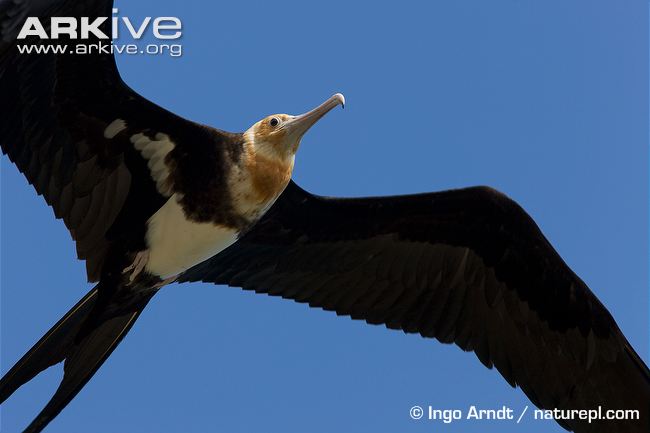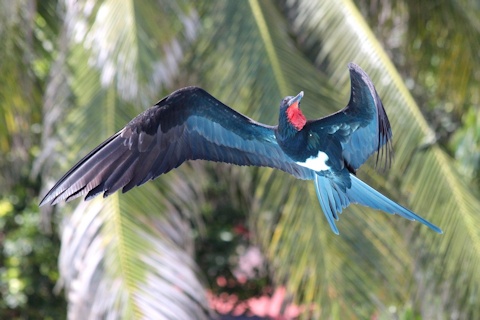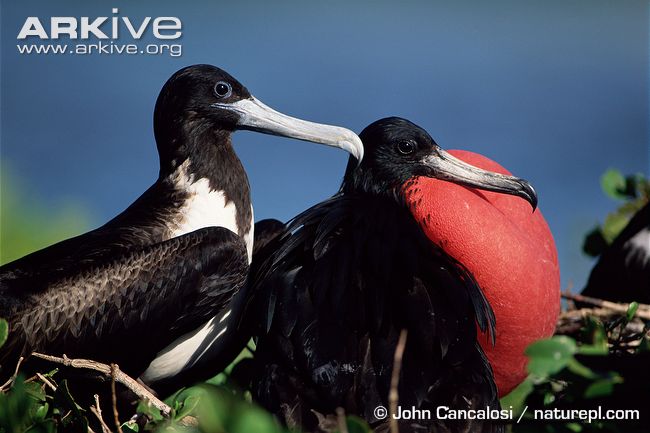
Fregata andrewsi
TAXONOMY
Fregata andrewsi Mathews, 1914, Christmas Island.
OTHER COMMON NAMES
English: Christmas Island frigatebird, Andrews’ frigatebird;
French: Frйgate d’Andrews; German: Weissbrauch Fregattvogel;
Spanish: Rabihorcado Grande.
PHYSICAL CHARACTERISTICS
Body length of 35–39 in (89–100 cm), a wingspan of 81–90 in
(206–230 cm), and weight of about 2.6 lb (1.2 kg). Males and
females have a white belly and a brown wing band. Females
have a black throat, while males have a bright red, inflatable
throat sac used in courtship displays.
DISTRIBUTION
Breeds on Christmas Island in the Indian Ocean but may feed
more widely in tropical and subtropical coastal waters of the
eastern Indian and southwestern Pacific Oceans.
HABITAT
Inhabits tropical and subtropical coastal waters, often near
mangrove forest.
BEHAVIOR
Like other frigatebirds, they are outstanding fliers, often soaring
to impressive heights. They are silent at sea but noisy at
their breeding colony.
FEEDING ECOLOGY AND DIET
Feed on flying fish caught in the air, on other small fish, squid,
and other marine food snatched at the sea’s surface, and on
meals they force other seabirds to disgorge in flight. They also
feed on fishery offal and by-catch and predate the eggs and
young of other seabirds.
REPRODUCTIVE BIOLOGY
Lays a single egg in a low nest, usually built in a mangrove
tree or shrub. The egg is incubated by both parents. The chick
is naked when born and is fed by both parents. Sexual maturity
is at 5–7 years.
CONSERVATION STATUS
This species is listed as Critically Endangered because it
breeds on only one tiny island, where its small and rapidly
decreasing population is threatened by poaching, habitat destruction
by mining and settlement, and an introduced ant
species.
SIGNIFICANCE TO HUMANS
Not of much importance to people, except for the economic
benefits of ecotourism related to birdwatching.
Other popular Animals
Photo Gallery of - Christmas frigatebird




 Animalia Life
Animalia Life